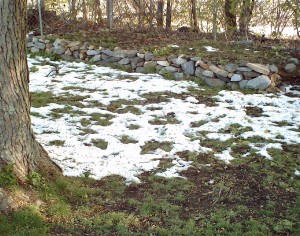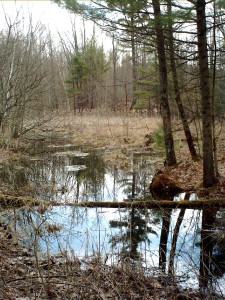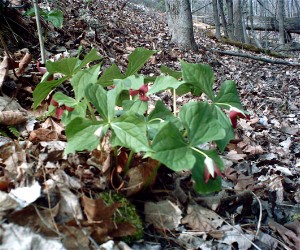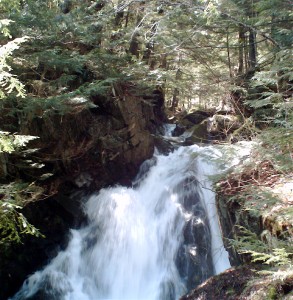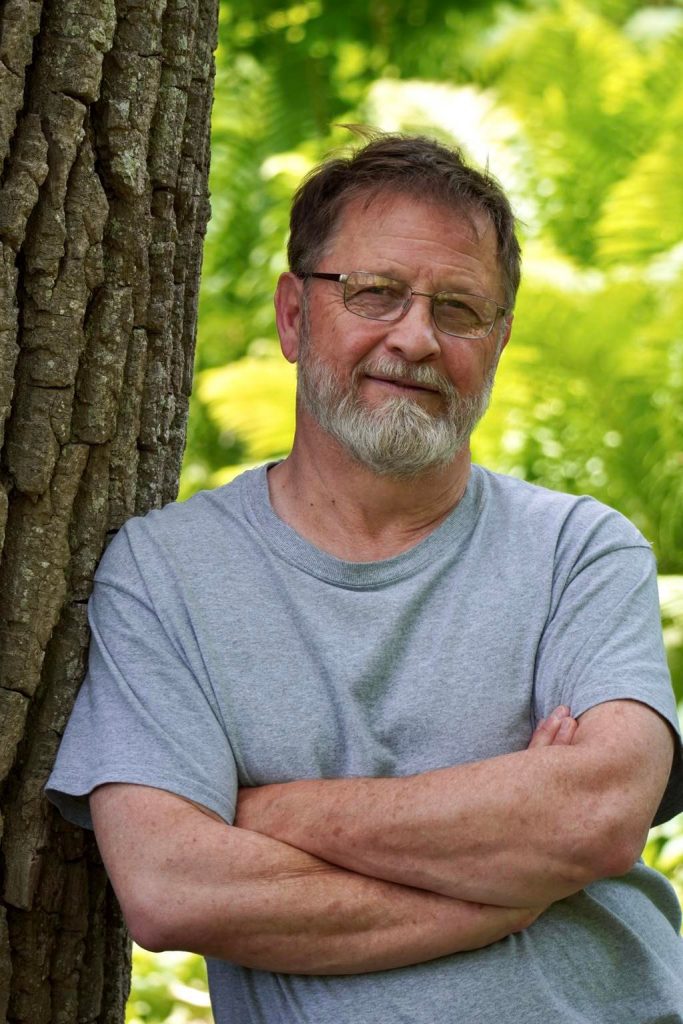May 06 2010
Leaf Out
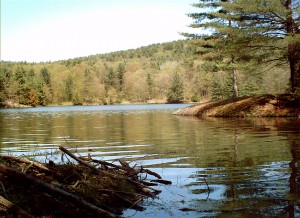 It is barely perceptible at first. Early in the season, I usually mistake the yellow-green catkins of poplars, elms and striped maples for the first leaf out. But eventually it comes, adding an ever-so-slight vernal cast to otherwise naked gray-brown trees. Then all of a sudden I get up one morning and notice that the trees are all clothed in bright green, as if it happened overnight. And maybe it did.
It is barely perceptible at first. Early in the season, I usually mistake the yellow-green catkins of poplars, elms and striped maples for the first leaf out. But eventually it comes, adding an ever-so-slight vernal cast to otherwise naked gray-brown trees. Then all of a sudden I get up one morning and notice that the trees are all clothed in bright green, as if it happened overnight. And maybe it did.
The forest greens from the bottom up. First the wildflowers strut their stuff, unfurling their leaves as they bloom: patches of trout lilies, trilliums, marsh marigolds and violets turning green long before the hardwood trees even think of it. Then the slightly larger understory plants join in, until the green is up to our eyeballs. Last but not least, the trees leaf out overhead, creating the canopy that makes the forest what it is – a shady sanctuary from summer heat. I welcome it, being more a creature of shadows than sunlight as all true woods wanderers are.
Flying insects accompany me during my leisurely ramble around Indian Brook Reservoir. I ignore them at first, then one takes a bite out of me. “So soon?” I ask, knowing full well that this is only a hint of what’s to come. I don’t care. I revel in sunny coolness, the muddy trail underfoot, and the sky blue sheen of the rippling body of water to my left. Few people are out here this afternoon, oddly enough, so it feels like I have the place all to myself – just my dog and me, that is. Matika races up and down the trail, sniffing here and there, watching for squirrels. She’s as happy to be here as I am.
On the north end of the reservoir, I find more signs of beaver activity than I remember from last year. Dams, lodges and fresh cuts – their numbers are growing. I wonder if the Essex townspeople care. This is, after all, their playground. Do they mind sharing it with so many toothy rodents? We’ll see.
Yeah, this pocket of wildland will soon be overrun by Essex townspeople swimming, picnicking, fishing, boating and hiking. Come Memorial Day, outsiders like me will need a permit to come here. But I’ll be deep in the mountains by then. Like most of the geese and ducks landing in the middle of the reservoir, I’m just passing through. A springtime sighting, no more.
By the end of my ramble, I’m so relaxed that I hate to get back in my car. I’m thinking I’m overdue for an overnight trip in the woods and should plan one immediately. After all, the green wave will be creeping up the mountains soon and I don’t want to miss it. That way I can experience leaf out all over again. This is one of the things I really like about springtime. It’s the gift that keeps on giving.
Comments Off on Leaf Out

